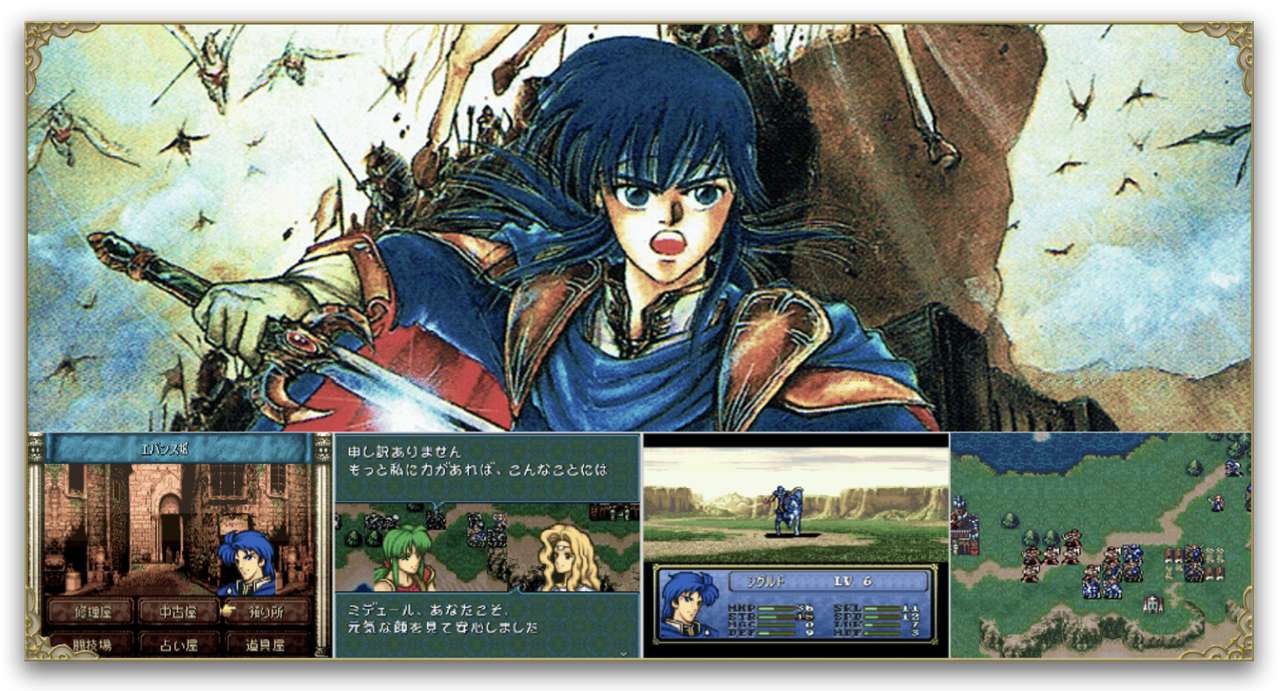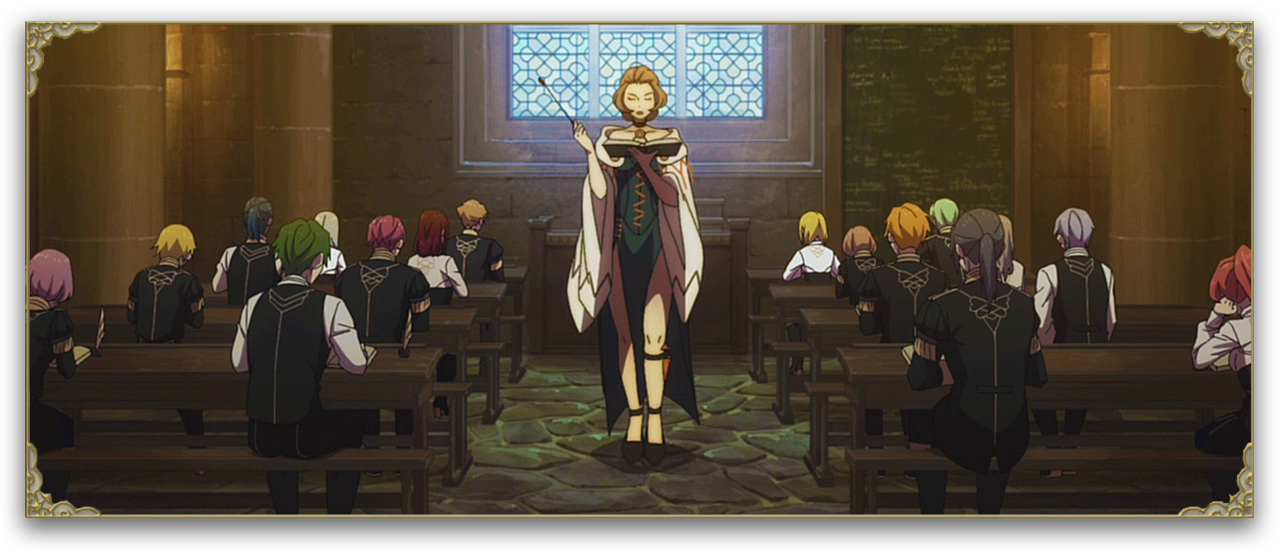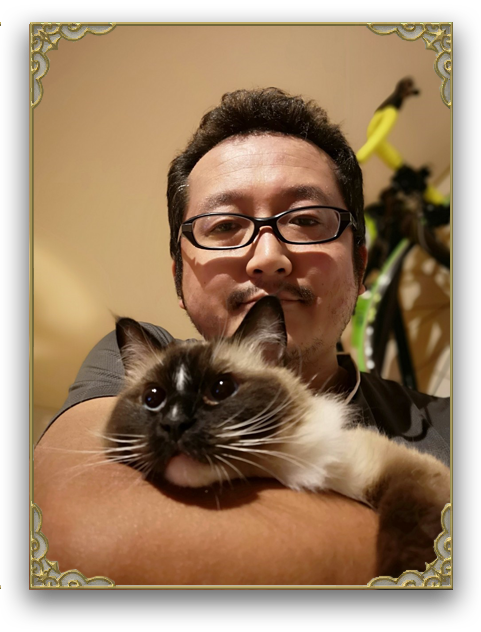"I don't know." I'm on the phone with Toshiyuki Kusakihara, one of the directors of Fire Emblem: Three Houses, Shadows of Valentia, and an art director on many others. And that's what he tells me through a translator when I ask what he thinks is the reason the series has suddenly skyrocketed in Western success over the last decade. It's a pretty amusing answer. "I actually don't know why it's been so accepted by so many people all over the world."
Nintendo's turn-based strategy RPG franchise has been popular with Japanese audiences ever since its inception in 1990, but outside of Japan, few had ever heard about it until two anime swordsmen named Marth and Roy made an appearance in Super Smash Bros. Melee. Following Melee's release in 2001, a number of Fire Emblem games made their way to the West on GameCube, DS, and Wii. But it wasn't until 2013, when Awakening released on the 3DS, that Fire Emblem actually exploded in international popularity, an occurrence that reportedly saved the series from imminent cancellation.

Maybe it was just the rapidly growing install base of the 3DS; the handheld was beginning to really hit its stride after a poor launch, and the new 3DS XL had recently gone on sale. Maybe it was a renewed interest in tactical strategy games; Firaxis' excellent reboot of XCOM, Enemy Unknown, had also been a recent and popular release. But Kusakihara genuinely couldn't point to anything remotely definitive. "We don't have the confidence to say: 'Oh! As long as we keep doing this thing, then the game will be popular!' There's nothing like that."
Since Awakening, the development team at Intelligent Systems has pulled Fire Emblem in a couple of interesting new directions. First was the ambitious Fates for 3DS, a title that was divided into three separate products. Then came Shadows of Valentia, a remake of the second-ever Fire Emblem game from 1992, which stood out for its notable tweaks to the strategy combat mechanics and featured third-person dungeon exploration, of all things. There was Fire Emblem Heroes, which refashioned the tactical battles to suit a surprisingly good bite-sized mobile game with an all-star cast. Now, Three Houses has been released for the Switch, and its narrative flow revolves around a yearly calendar schedule, coupled with a military academy where your protagonist is a professor and your class of students are your troops.
"We don't have the confidence to say: 'Oh! As long as we keep doing this thing, then the game will be popular!' There's nothing like that."
When Three Houses was officially revealed, I (and I assume many others) saw the academy component and instantly made the connection to another Japanese RPG which saw an enormous spike in popularity--the Shin Megami Tensei spin-off, Persona. Persona games always revolve around students in high school across the course of a year, so naturally, I assumed that the Fire Emblem development team looked at Persona's incredible success and attempted to tap into that formula. Of course, like the foolish Westerner I am, I was wrong.
"'Genealogy Of The Holy War' was what we directly drew inspiration from," Kusakihara stated. "This was a game for the Super Famicom that released in 1996, and it's the fourth in the Fire Emblem series." It was never released in English, though a fan translation exists. "In this game, you have an Officer's Academy where there are best friends who really develop their relationships there, and the story was centered around them. So [Three Houses] was kind of an attempt to create that kind of setting in more detail."

Building beautifully aspirational lifelong relationships through an extravagantly romanticized depiction of high school life is a huge component of Three Houses. Across the course of a campaign, you'll spend a couple of dozen hours with any number of students at the academy, sharing meals, training and fighting alongside them, getting to know each other through laughter, loss, and love. Later on, as Fire Emblem games typically unfold, you'll go to war, and how the game's bloody conflicts unfold and affect everyone might just change how once close friends see one another. Across the course of development, a number of different methods to help articulate this experience were explored, but the team's natural conclusion just so happened to resemble the popular Shin Megami Tensei spin-off. "We had a lot of talks about how we could distinguish the passage of time at the monastery. If you have one year, we really want the player to feel each of those days passing and make them valuable to the player," Kusakihara explained.
"We didn't have a calendar at the very beginning of development. We did a lot of builds where we were trying to make systems that worked but it just wasn't fun. So we added that and the element of activity points." In Three Houses, a set amount of activity points, tied to your Professor Level, restricts how much one-on-one tutelage you can give students, as well as how many extracurricular activities you can perform on your days off. "[Activity points] would really focus the player on what they should do every day, whether that's exploring or going on missions, etc."
When Sunday rolls around in Three Houses and you don't need to spend your day teaching your students, there are a number of valuable things you can choose to do, but you won't have enough time to do them all. You can get your own one-on-one training sessions from fellow professors to improve your own skills, you can set off to the battlefield and fight sorties to complete side missions, you can fish, you can garden, you can sleep in and do nothing, but most importantly: You can hang out with your students and cultivate those personal relationships. Having a close-knit camaraderie in your class will provide a significant advantage on the battlefield, of course, but off the battlefield, these social links can blossom into deep friendships and sometimes the suggestion of romance, providing a wealth of insight to the backstories of the characters. Between the three different classes of students, the professors, and other academy staff, Three Houses has 35 characters with storylines that tie the majority of them together.

Kusakihara breaks down the production of the social simulation: "There were three scenario writers from Koei Tecmo that helped out with a lot of the writing, and as you know the game is fully voiced. So we definitely had a lot of content to work on. The work took over three months and there was at least five times as much content as there was in Echoes [Shadows of Valentia] for the Japanese version."
The involvement of Koei Tecmo (responsible for another enduring tactical strategy series, Romance Of The Three Kingdoms) in the development of Three Houses was already a known factor, but what was surprising to me is just how much of the legwork the studio was responsible for, especially because Fire Emblem is so closely associated with Intelligent Systems. Kusakihara: "With the composition of the team, I stood in as a director representing Intelligent Systems, and then we had Mr. Takeru Kanazaki working as a sound director. We had a few members helping with programming and also sound, but many members of the development team were from Koei Tecmo, so they really did a lot of the work."
"...there was at least five times as much content as there was in Echoes."
"I provided the world settings and the character settings and some of the systems and scenarios from the game, and we would hand this over to Koei Tecmo and then discuss further detail and develop from there." It's a curious revelation, if only because it invites speculation about what kind of projects the rest of Intelligent Systems might working on. It's also interesting that Koei Tecmo, responsible for the Dynasty Warriors action series (as well as the spin-off Fire Emblem Warriors), was also heavily responsible in another Nintendo title that released a week prior to Three Houses--Marvel Ultimate Alliance 3.

Among the fresh new faces to contribute significant work to Three Houses was illustrator Chinatsu Kurahana, who served as the game's new lead character designer. Kurahana's previous work most notably includes designing characters for the popular Japanese romantic visual novel series, Uta no Prince-sama, a game revolving around a teenage girl's budding relationships with a group of aspiring male pop idols.
Dating idols isn't really that much of a far cry from the social aspect of Fire Emblem, and with the new direction of the series, Kurahana was an easy choice. "A lot of this game takes place at the Officer's Academy and there are a lot of nobles there. So we want to kind of depict a glamorous, aristocratic society," Kusakihara told me. "Kurahana, who we had already been in talks with, seemed like she would be a good fit, and she definitely had a big impact of the hairstyles of the characters."
"We also wanted a bit of a refresh because we were putting this game out on the Nintendo Switch, which is a new platform and, well, we wanted a new image for the game." Hairstyles aren't the only huge makeover for the series, naturally. One of the biggest mechanical restylings in Three Houses is the removal of Fire Emblem's Weapon Triangle, the rock-scissors-paper system that has been the core foundation of combat in every entry since, well, Genealogy of the Holy War.
That's a pretty funny, serendipitous coincidence--the new Fire Emblem game, which returns to a relatively minor idea found in Genealogy of the Holy War, also completely discards that entry's most influential and longest-lasting legacy. The reasons Kusakihara gives me are pretty understandable: "We think that the weapon triangle is somewhat of a stylized system, it isn't really realistic," he said. "If you have a situation where a novice axe user takes down an advanced lance user, well, that makes sense? Probably not. So, we wanted to make something that comes across as more realistic to warfare and have players develop their weapons skills individually."

It also came down to the series' continuing focus on its personalities, especially given Three Houses' setting of an academy where teenage students are only just coming into their own. "We wanted to center on developing the skills for these characters, and also give them a lot more freedom in terms of how they develop. So we're really creating a weapon system that is less restrictive than our previous games."
That's not to say that picking the right unit or weapon for a battle isn't an important matter in Three Houses. There are still situations where one approach might give you a massive advantage, like using arrows against flying units. And, if one of your units becomes increasingly proficient in a certain type of weapon type or discipline, you might unlock an option to equip them with passive or active combat abilities that help give them the upper hand against other certain weapons types or disciplines--an advanced swordsman might have an "Axebreaker" ability, for example, which will increase both their avoidance and chance to hit against that weapon.
"...the weapon triangle is somewhat of a stylized system, it isn't really realistic."
But the new system of having the freedom to mold your combat units into whatever you like also creates some interesting social-level predicaments that might in turn ask you to rethink the long-term strategy for your troupe. During my first campaign, for example, I had Dorothea in my class. She excels in black magic and swordplay, her lifelong ambitions are to be a badass warlock, and she hates the idea of learning faith-based healing magic--it's for weenies, after all, and she even harbors an innate learning disadvantage towards it.

But, if you're dedicated enough, by spending a large amount of your class time to some serious one-on-one tutelage on Faith, Dorothea has the capacity to eventually uncover hidden potential. She'll get early access to an ability that even advanced Bishops would covet, and eventually turn that learning disadvantage into a buff. There's some contentious subtext in this example, but regardless, the system allows you to foster unique narratives for your class--it was a tough decision to give one of my favorite students (and my most effective magic user) a hard time in class for a couple of months instead of honing her strengths even further. But it was worth it.
Kusakihara doesn't play favorites, though. Toward the end of the conversation, I tried to get the developers on the call to dish dirt on the team's most hated students (mine's Lorentz, he sucks). Everyone laughs: "As the director of the game, It's almost like, you know, I am the teacher because I helped to create them. So I have to say that I love all the students." Genki Yokota, the other director for Three Houses, representing Nintendo, was the only one who threw me a bone: "You're supposed to be helping out the students, so it's hard to say that I hate any of them. But outside of the students, I can say that I really like the character Shamir." I like Shamir too, so this was a good answer.
It's pretty common to hear stories about developers responding to audience feedback and using that data to shape future projects. Kusakihara left me with the impression that his team is on the other side of that coin. They don't know why their game has attracted the fanbase it has in the west, so they're just going to just keep doing what they've done since Awakening. Changing the structure. Reinventing foundational mechanics. Welcoming the talents of new teams and artists. "When we develop the game, we just strive to make it something beyond what people can imagine," he said. "That might help in making it popular."

